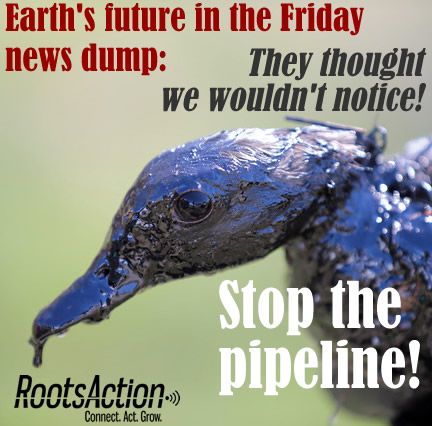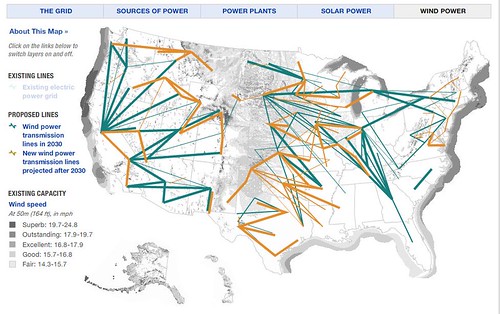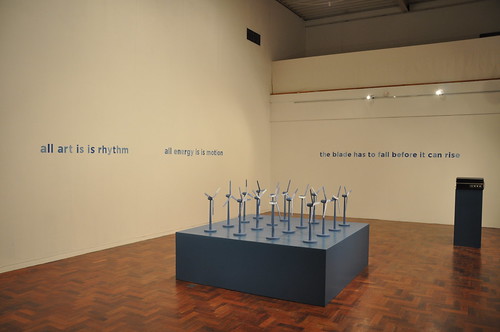“Quis custodiet ipsos custodes?” (Who watches the watchers) Juvenal


Recently, a US rancher with unfortunate racist and fascist tendencies came to the attention of US media with unfortunate consequences but an interesting discourse path. I won’t repeat those issues here except to note that the concerns on which this dispute hinged were issues of common-pool resources. Those are publicly owned assets used by that rancher under a contractual agreement to pay for those property rights to the tune of $1 million. In this case the rancher refused on anachronistic ideological grounds to pay those fees with the contradictory premise that his citizenship beliefs were historically special and autonomously sovereign and therefore exempt from the obligations to his original contract. The Rancher was first lionized by conservative media as a hero resisting an “overreaching” oppressive federal state by privileging the authority of the local state but at this moment in the dispute and due to various public statements and further investigation is now seen as more of a pariah engaged in social banditry. The rancher was contesting issues of exclusion or exclusivity especially in terms of the right to claim rents owed for the contract with the Bureau of Land Management. As Ellickson (1991) has noted, much of the issues are less about land than they are about negotiation as constituitive communication or the social construction of rights.

The right to the city is not the right to the country much as libertarianism has no clear boundaries to what counts as wealth. In the case of Western grazing rights, matters of land and domain become more complicated just as eminence gains greater value as demographic values become less symmetrical. What is being contested are environmental resource rights which as ecological crisis shows us is non-excludable, however, they become reified and therefore excludable in the space of judicial discourse.
There is a line of thinking that leads to Lefebvre and his notion of the “right to the city” as the right that includes and combines all rights. This right is not a matter of access to city spaces (although we should not underestimate specific struggles for free access to parks, etc.), it is not simply a matter of being able to have your own house and the assets that are needed to support your own life, it is something which includes all those demands but also goes beyond them by creating a higher level of the commons. For Lefebvre the right to the city is the right to create the city as a collective work of art. The city, thus, can be produced through encounters that make room for new meanings, new values, new dreams, new collective experiences. And this is indeed a way to transcend pure utility, a way to see commons beyond the utilitarian horizon
This may be an example of what Massimo De Angelis calls a “new enclosure” in that its virtual capital value as mediated political/social capital and its land rent value while connected contain differing versions of capital formation particularly in the differences among use and exchange values. In this Nevada case most recently discussed, the adjudication of self-management for the common-property regime breaks down as competing ideological interests appropriate the message of cultural capital whether for anti-statist activism under some fictive militia meme, or main-stream media corporations looking to procure higher ratings from some core constituency in a low-information audience of reactionaries. The fissures in this discourse have emerged only recently as the character representations of the rancher’s own history have become known. Any possibility of creating a “higher level of the commons” available as a common-property regime defined democratically only an hour’s drive from Las Vegas seems bleak at best given the levels of political and social capital contesting for dominance and using a variety of social media.
Common-pool resources may be owned by national, regional or local governments as public goods, by communal groups as common property resources, or by private individuals or corporations as private goods. When they are owned by no one, they are used as open access resources. Having observed a number of common pool resources throughout the world, Elinor Ostrom noticed that a number of them are governed by common property regimes – arrangements different from private property or state administration – based on self-management by a local community. Her observations contradict claims that common-pool resources should be privatized or else face destruction in the long run due to collective action problems leading to the overuse of the core resource.
Many variations of this have been discussed here before in terms of alternative organizational arrangements: collectives, worker-ownership of firms, and cooperatives.
Massimo De Angelis: My interest in the commons is grounded in a desire for the conditions necessary to promote social justice, sustainability, and happy lives for all. As simple as that. These are topics addressed by a large variety of social movements across the world that neither states nor markets have been able to tackle, and for good reasons. State policies in support of capitalist growth are policies that create just the opposite conditions of those we seek, since they promote the working of capitalist markets. The latter in turn reproduce socio-economic injustices and hierarchical divisions of power, environmental catastrophes and stressed-out and alienated lives. Especially against the background of the many crises that we are facing today-starting from the recent global economic crisis, and moving to the energy and food crises, and the associated environmental crisis-thinking and practicing the commons becomes particularly urgent….
The discourse on the commons relates to Marxist thinking in different ways. In the first place, there is the question of interpreting Marx’s theory of primitive accumulation. In one of the final chapters of volume one of Capital, Marx discusses the process of expropriation and dispossession of commoners, which he refers to as “primitive accumulation,” understood as the process that creates the precondition of capitalist development by separating people from their means of production. In sixteenth- to eighteenth-century England, this process became known as “enclosure”-the enclosure of common land by the landed nobility in order to use the land for wool production. The commons in these times, however, formed an essential basis for the livelihood of communities. They were fundamental elements for people’s reproduction, and this was the case not only in Britain, but all around the world. People had access to the forest to collect wood, which was crucial for cooking, for heating, for a variety of things. They also had access to common grassland to graze their own livestock. The process of enclosure meant fencing off those areas to prevent people from having access to these common resources. This contributed to mass poverty among the commoners, to mass migration and mass criminalization, especially of the migrants. These processes are pretty much the same today all over the world. Back then, this process created on the one hand the modern proletariat, with a high dependence on the wage for its reproduction, and the accumulation of capital necessary to fuel the industrial revolution on the other.
Marx has shown how, historically, primitive accumulation was a precondition of capitalist development. One of the key problems of the subsequent Marxist interpretations of primitive accumulation, however, is the meaning of “precondition.” The dominant understanding within the Marxist literature-apart from a few exceptions like Rosa Luxemburg – has always involved considering primitive accumulation as a precondition fixed in time: dispossession happens before capitalist accumulation takes place. After that, capitalist accumulation can proceed, exploiting people perhaps, but with no need to enclose commons since these enclosures have already been established. From the 1980s onwards, the profound limitations of this interpretation became obvious. Neoliberalism was rampaging around the world as an instrument of global capital. Structural adjustment policies, imposed by the IMF (International Monetary Fund), were promoting enclosures of “commons” everywhere: from community land and water resources to entitlements, to welfare benefits and education; from urban spaces subject to new pro-market urban design and developments to rural livelihoods threatened by the “externalities” of environmentally damaging industries, to development projects providing energy infrastructures to the export processing zones. These are the processes referred to by the group Midnight Notes Collective as “new enclosures.”...
Furthermore, it is important to note that the problem of the commons cannot be simply described as a question of self-interest versus common interests. Often, the key problem is how individual interests can be articulated in such a way as to constitute common interests. This is the question of commoning and of community formation, a big issue that leads to many open questions. Within Marxism, there is generally a standard way to consider the question of common interests: these are given by the “objective” conditions in which the “working class” finds itself vis-à-vis capital as the class of the exploited. A big limitation of this standard interpretation is that “objectivity” is always an inter-subjective agreement. The working class itself is fragmented into a hierarchy of powers, often in conflicts of interest with one another, conflicts materially reproduced by the workings of the market. This means that common interests cannot be postulated, they can only be constructed. Link The Commoner.org


The Commons tragedy is a myth in the 21st Century and embodied in this dispute, with the most bizarre elements and participants ranging from sinophobic conspiracy theories to the militaristic fetishism of apocalyptic end-times enthusiasts
As Karl Marx wrote, nature requires long cycles of birth, development and regeneration, but capitalism requires short-term returns.
“[T]he entire spirit of capitalist production, which is oriented towards the most immediate monetary profits, stands in contradiction to agriculture, which has to concern itself with the whole gamut of permanent conditions of life required by the chain of human generations. A striking illustration of this is furnished by the forests, which are only rarely managed in a way more or less corresponding to the interests of society as a whole …” (Marx 1998: 611n)

In the current situation, a microcosm of the historical land disputes that have defined the US, all we are left with his a series of conflicts that while interesting from a law enforcement perspective, contribute nothing to the commons or community discourse necessary for a modern democracy. Depending on the regime in Washington DC, the environment is a contestable terrain for stewardship labeled variously as exploitation or wise-use. In the role of a tragic actor, an older man whose violation of law and a legal contract has been manipulated and appropriated by a host of interests we are left with a parody of the commons where the rancher cannot withhold anything and the state is paralyzed by low-information thresholds, while trust and reciprocity come from the barrels of firearms, truly The Comedy of the Commons







 You would never know that if you live in the upper Midwest and Northeastern US but according to the National Oceanic and Atmospheric Administration the earth was
You would never know that if you live in the upper Midwest and Northeastern US but according to the National Oceanic and Atmospheric Administration the earth was  In Dunkard Township, Pennsylvania, 50 miles south of Pittsburgh,
In Dunkard Township, Pennsylvania, 50 miles south of Pittsburgh, 






